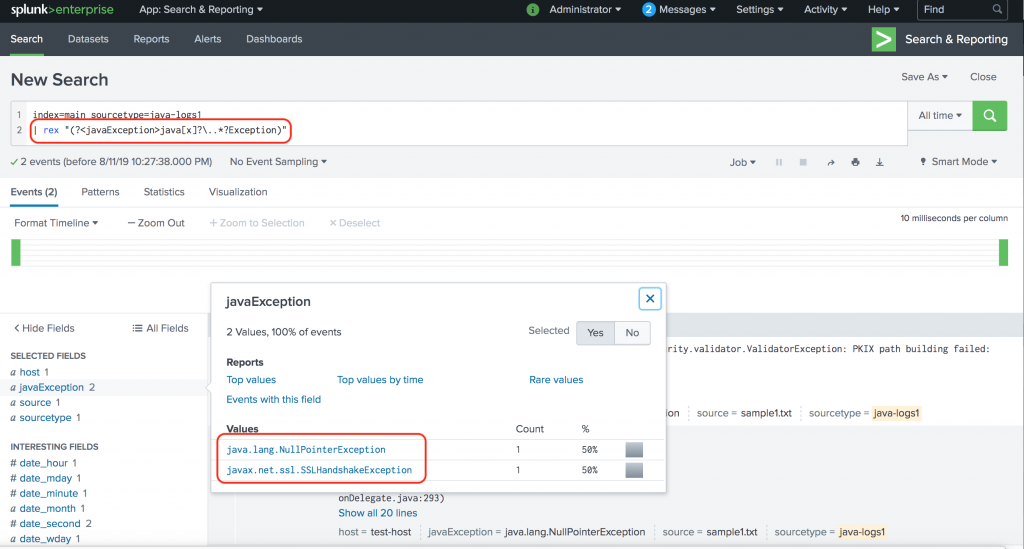

Use the rex command for search-time field extraction or string replacement and character substitution. Running the rex command against the _raw field might have a performance impact. If a field is not specified, the regular expression or sed expression is applied to the _raw field. Read about using sed to anonymize data in the Getting Data In Manual. This sed-syntax is also used to mask, or anonymize, sensitive data at index-time. When mode=sed, the given sed expression used to replace or substitute characters is applied to the value of the chosen field. The rex command matches the value of the specified field against the unanchored regular expression and extracts the named groups into fields of the corresponding names. If you have not created private apps, contact your Splunk account representative for help with this customization.Use this command to either extract fields using regular expression named groups, or replace or substitute characters in a field using sed expressions. If you are a Splunk Cloud administrator with experience creating private apps, see Manage private apps in your Splunk Cloud deployment in the Splunk Cloud Admin Manual. For example, if form=sales_order, the search looks for a sales_order.form, and matches all processed events against that form to extract values.įor Splunk Cloud Platform, you must create a private app to extract fields using form templates. The kvform command extracts field and value pairs from events based on form templates that are predefined and stored in $SPLUNK_HOME/etc/system/local/, or your own custom application directory in $SPLUNK_HOME/etc/apps/. The spath command extracts information from structured data formats, such as XML and JSON, and store the extracted values in fields.Įxtract fields from events based on form templates The xmlkv command enables you to force field and value extractions on XML-formatted tags in event data, such as transactions from web pages.Įxtract fields from XML and JSON documents The multikv command creates a new event for each table row and derives field names from the table title.Įxtract fields from events formatted in XML Use the multikv command to force field and value extractions on multiline, tabular-formatted events. You can also use the extract command to test field extractions that you add to the conf files.Įxtract fields from events formatted as tables If you use the extract command without specifying any arguments, fields are extracted using field extraction stanzas that have been added to the nf file. The extract command forces field/value extraction on the result set. If a raw event contains From: Susan To: Bob, the search extracts the field name and value pairs: from= Susan and to= Bob.įor a primer on regular expression syntax and usage, see The following are useful third-party tools for writing and testing regular expressions:

In this example, values that occur after the strings From: and To: are saved into the from and to fields. The rex command matches segments of your raw events with the regular expression and saves these matched values into a field. The rex command performs field extractions using named groups in Perl regular expressions that you include in the search criteria. See About fields in the Knowledge Manager Manual.
#SPLUNK REX FIELD RAW EXAMPLE HOW TO#
The following sections describe how to extract fields using regular expressions and commands. In Splunk Web, you can define field extractions on the Settings > Fields > Field Extractions page. The kvform command extracts field and value pairs based on predefined form templates.The xmlkv and xpath commands extract field and value pairs on XML-formatted event data.The spath command extracts field and value pairs on structured event data, such as XML and JSON.The multikv command extracts field and value pairs on multiline, tabular-formatted events.The extract (or kv, for key/value) command explicitly extracts field and value pairs using default patterns.

The rex command performs field extractions using named groups in Perl regular expressions.You can use search commands to extract fields in different ways.


 0 kommentar(er)
0 kommentar(er)
